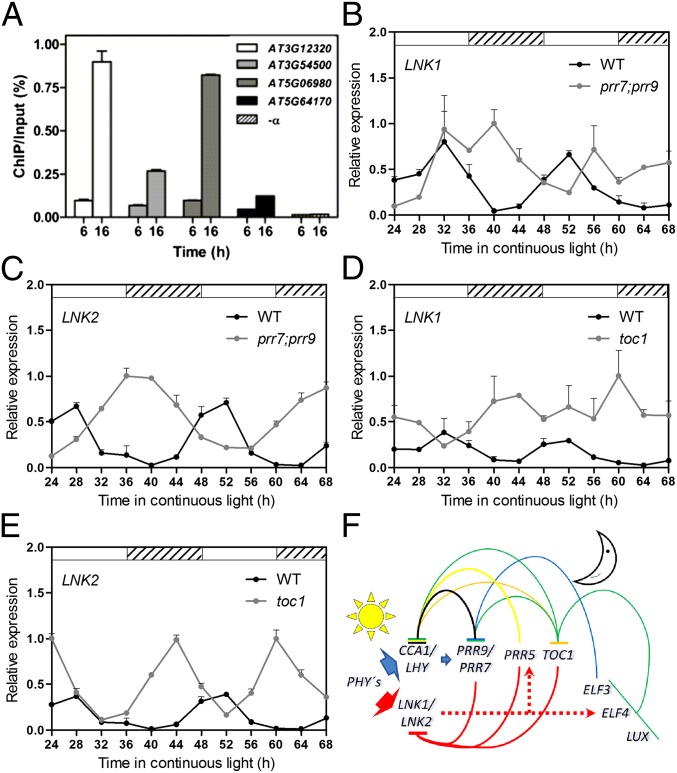Fig. 5.
LNK1 and LNK2 are repressed by the TOC1/PRR1 family of circadian clock components. (A) TOC1 binds to LNK1–4 gene promoters. ChIP-qPCR assays were conducted using TOC1. Minigene (TMG) seedlings grown under 12-h light/12-h dark cycles. Samples were collected at ZT 6 and ZT16 in the light and dark, respectively. (B–E) LNK1 (B and D) and LNK2 (C and E) expression measured by qRT-PCR in continuous light relative to PP2A (n = 4). Plants were grown under 12-h light/12-h dark cycles and then transferred to continuous light. Error bars indicate +SEM. Open and hatched boxes indicate subjective day and subjective night, respectively. (F) Model showing the proposed function of LNK1 and LNK2 in the circadian clock. Light regulates LNK1 and LNK2 expression in the morning, which then act to promote, directly or indirectly (dashed line), the expression of a subset of afternoon genes, including the core clock genes PRR5 and ELF4. During the afternoon and early evening, PRR9, PRR7, PRR5, and TOC1 bind to the LNK promoters blocking their expression.

